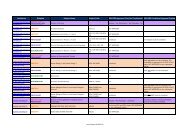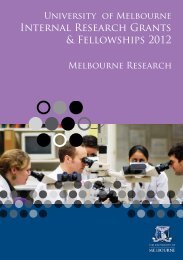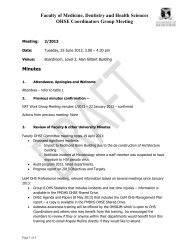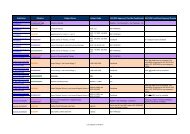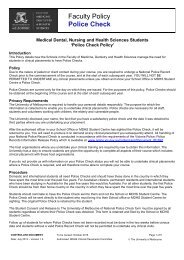A Body of Evidence: An Art Historical perspective on Eighteenth and ...
A Body of Evidence: An Art Historical perspective on Eighteenth and ...
A Body of Evidence: An Art Historical perspective on Eighteenth and ...
Create successful ePaper yourself
Turn your PDF publications into a flip-book with our unique Google optimized e-Paper software.
using careful measurements <str<strong>on</strong>g>of</str<strong>on</strong>g> many examples. Many such later texts took<br />
Vesalius’ Fabrica as the exemplar for the c<strong>on</strong>venti<strong>on</strong>s <str<strong>on</strong>g>of</str<strong>on</strong>g> anatomical illustrati<strong>on</strong>.<br />
Figures were placed in elaborate l<strong>and</strong>scapes <strong>and</strong> the arrangement <str<strong>on</strong>g>of</str<strong>on</strong>g> secti<strong>on</strong>s<br />
within each text was closely based <strong>on</strong> Vesalius.<br />
In Vesalius’ Fabrica the skelet<strong>on</strong> in the sec<strong>on</strong>d plate leans against a memorial<br />
with the Latin text, ‘Man lives through his genius, all the rest is mortal’, 71 while<br />
c<strong>on</strong>sidering a skull in a melancholic scene <str<strong>on</strong>g>of</str<strong>on</strong>g> memento mori (Fig.14). The<br />
background is barren rock <strong>and</strong> earth, while the light raking from in fr<strong>on</strong>t <str<strong>on</strong>g>of</str<strong>on</strong>g> the<br />
figure gives it a three-dimensi<strong>on</strong>al appearance <strong>and</strong> situates it within the<br />
l<strong>and</strong>scape. In Godfried Bidloo’s <str<strong>on</strong>g>An</str<strong>on</strong>g>atomica humani corporis, Amstelodami (1685),<br />
Gerard de Lairesse uses familiar devices employed by illustrators such as<br />
<str<strong>on</strong>g>perspective</str<strong>on</strong>g>, shading <strong>and</strong> background. He extends the metaphor <str<strong>on</strong>g>of</str<strong>on</strong>g> the skelet<strong>on</strong><br />
being the framework <str<strong>on</strong>g>of</str<strong>on</strong>g> the body by the use <str<strong>on</strong>g>of</str<strong>on</strong>g> architectural references in the<br />
background. In the Skelet<strong>on</strong> with the hour glass (Fig. 15) the skelet<strong>on</strong> is surrounded<br />
by carefully chosen symbols. Many <str<strong>on</strong>g>of</str<strong>on</strong>g> these symbols, such as the open<br />
sarcophagus with the draped shroud <strong>and</strong> the hourglass running out in the h<strong>and</strong><br />
<str<strong>on</strong>g>of</str<strong>on</strong>g> the skelet<strong>on</strong>, allude to the associati<strong>on</strong>, current in the seventeenth century, <str<strong>on</strong>g>of</str<strong>on</strong>g><br />
the study <str<strong>on</strong>g>of</str<strong>on</strong>g> anatomy with death <strong>and</strong> mortality. The large architectural arch <strong>and</strong><br />
the lid <str<strong>on</strong>g>of</str<strong>on</strong>g> the sarcophagus separate the skelet<strong>on</strong> from the trees, houses <strong>and</strong><br />
mountains bey<strong>on</strong>d, to suggest the ultimate separati<strong>on</strong> <str<strong>on</strong>g>of</str<strong>on</strong>g> death. Similarly in<br />
71 This quote was taken from Virgil’s elegies <strong>on</strong> Maecenas. Hildebr<strong>and</strong>, 2004, p. 299.



